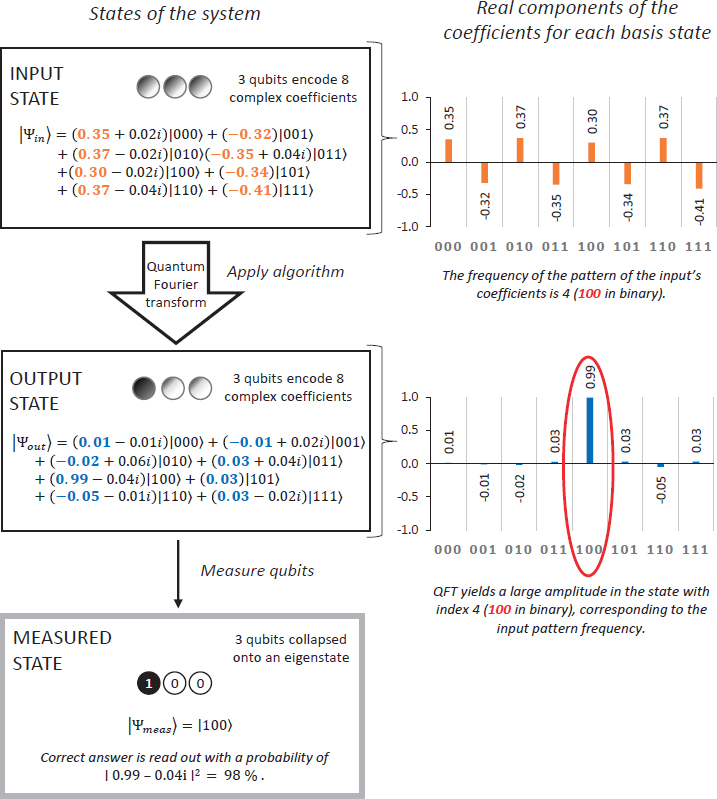Quantum computing is a fascinating field that has captured the attention of many scientists and researchers around the world. It is a type of computing that uses quantum mechanics to process information, which is different from the classical computing that we use today. One of the most important components of quantum computing is the use of quantum gates, which are similar to the logic gates used in classical computing. However, quantum gates have one key difference: they are reversible. This raises the question, why does quantum computing use reversible gates?
The answer lies in the fundamental principles of quantum mechanics. In classical computing, information is processed by manipulating bits that can only be in one of two states, either 0 or 1. However, in quantum computing, information is processed by manipulating quantum bits, or qubits, which can exist in multiple states at the same time. This is known as superposition, and it is one of the key features that make quantum computing so powerful. To manipulate qubits, quantum gates are used, and these gates must be reversible to ensure that the superposition of states is preserved. In other words, if a gate is not reversible, it can cause information to be lost, which can lead to errors in the computation.
Quantum computing uses reversible gates to represent and manipulate information, as they require less energy than other types of gates. This means that they can process data faster than traditional computers, allowing for faster and more efficient calculations. Reversible gates can also be used to store information, which can be used for applications such as cryptography and data storage.

What is Reversible Gates?
Reversible gates are logic gates that are used to calculate functions in quantum computing. Reversible gates are an important part of quantum computing because they allow the calculation of functions without losing any information. This is because reversible gates are designed to preserve quantum information. They are designed to be reversible and the output of each gate can be used as the input for another gate. This means that the output of one gate can be used as the input for another gate in order to perform complex calculations.
Reversible gates are also used to increase the efficiency of quantum computers. By using reversible gates, quantum computers can calculate complex functions more quickly and accurately. This means that quantum computers can be used to solve problems more quickly and accurately than traditional computers.
Why Does Quantum Computing Use Reversible Gates?
Quantum computing uses reversible gates for several reasons. First, reversible gates are necessary for quantum computers to perform calculations without losing any information. This is because reversible gates are designed to be reversible, meaning that the output of one gate can be used as the input for another gate. This means that the output of one gate can be used as the input for another gate in order to perform complex calculations.
Second, reversible gates are also used to increase the efficiency of quantum computers. By using reversible gates, quantum computers can calculate complex functions more quickly and accurately. This means that quantum computers can be used to solve problems more quickly and accurately than traditional computers.
Finally, reversible gates are also used to preserve quantum information. This is because reversible gates are designed to preserve quantum information, meaning that the output of each gate can be used as the input for another gate. This means that the output of one gate can be used as the input for another gate in order to perform complex calculations.
How Do Reversible Gates Work?
Reversible gates are logic gates that are used to calculate functions in quantum computing. Reversible gates are designed to preserve quantum information, meaning that the output of each gate can be used as the input for another gate. This means that the output of one gate can be used as the input for another gate in order to perform complex calculations.
Reversible gates work by using a process called quantum superposition. This process allows a quantum system to exist in multiple states at the same time. This means that reversible gates can be used to calculate functions without losing any information.
What Are the Benefits of Using Reversible Gates?
The use of reversible gates in quantum computing offers several benefits. First, reversible gates allow quantum computers to calculate complex functions more quickly and accurately. This means that quantum computers can be used to solve problems more quickly and accurately than traditional computers.
Second, reversible gates also help to preserve quantum information. This is because reversible gates are designed to preserve quantum information, meaning that the output of each gate can be used as the input for another gate. This means that the output of one gate can be used as the input for another gate in order to perform complex calculations.
Finally, reversible gates can also be used to increase the efficiency of quantum computers. By using reversible gates, quantum computers can calculate complex functions more quickly and accurately. This means that quantum computers can be used to solve problems more quickly and accurately than traditional computers.
Conclusion
Reversible gates are an important part of quantum computing because they allow the calculation of functions without losing any information. Reversible gates are also used to increase the efficiency of quantum computers and to preserve quantum information. Reversible gates work by using a process called quantum superposition and offer several benefits, including the ability to calculate complex functions more quickly and accurately and to preserve quantum information.
Frequently Asked Questions
In quantum computing, reversible gates are used to manipulate qubits, the building blocks of quantum information. These gates are applied to qubits to produce the desired output state.
What are Reversible Gates?
Reversible gates are quantum computing operations that are used to manipulate qubits, the fundamental units of quantum information. Reversible gates act on qubits in such a way that the original qubits can be perfectly recovered after the gate is applied. This means that the information contained in the qubits is not lost during the operation, allowing for the manipulation of qubits without introducing errors.
The most common type of reversible gate is the C-NOT (controlled-not) gate, which takes two qubits as inputs and produces a single output qubit. By applying the C-NOT gate to a pair of qubits, the output state of the qubits can be manipulated in a precise manner, allowing for the implementation of complex quantum algorithms.
Why Does Quantum Computing Use Reversible Gates?
Reversible gates are used in quantum computing because they allow for the manipulation of qubits without introducing errors. This is important because errors in quantum algorithms can lead to incorrect results. By using reversible gates, errors can be avoided and precise results can be obtained.
In addition, reversible gates are used because they are more efficient than traditional gates. Traditional gates require a large number of logic operations to manipulate a single qubit, while reversible gates can manipulate multiple qubits with just one operation. This makes reversible gates more suitable for quantum computing, which is inherently a resource-intensive process.
Are Reversible Gates Used in Other Areas of Computing?
Reversible gates are not widely used in other areas of computing, as they are only applicable to quantum computing algorithms. However, some research is being conducted in the area of reversible computing, which attempts to use reversible gates in classical computing. Reversible computing could potentially offer advantages such as increased energy efficiency, as reversible gates do not require the same amount of energy as traditional gates.
What are the Limitations of Reversible Gates?
One of the main limitations of reversible gates is that they cannot be used to implement certain types of algorithms, such as probabilistic algorithms. This is because reversible gates are limited to manipulating individual qubits, and cannot be used to perform operations on multiple qubits at once.
In addition, reversible gates are limited in their ability to manipulate qubits. While reversible gates can be used to manipulate qubits in a precise manner, they are limited in their ability to produce certain types of states. This limits the types of algorithms that can be implemented using reversible gates.
How Can Reversible Gates be Improved?
Reversible gates can be improved by increasing the number of qubits that can be manipulated at once, as well as by developing new types of reversible gates that can produce more complex states. In addition, research is being conducted into new methods of error correction, which could potentially reduce the amount of errors introduced when using reversible gates. Finally, algorithms that are specifically designed to take advantage of reversible gates could be developed, which could potentially increase the efficiency of quantum computing algorithms.

Logic Gates Rotate Qubits
In conclusion, the use of reversible gates in quantum computing is critical for achieving faster and more efficient computations. These gates allow for the manipulation of qubits, the building blocks of quantum computing, in a way that preserves the information encoded in them. By reversing the operations performed on the qubits, the computations can be undone, thus reducing errors and increasing the speed of the computation.
Furthermore, reversible gates also enable the implementation of more complex quantum algorithms, such as quantum Fourier transform and Shor’s algorithm for factorization. These algorithms have the potential to solve problems that are intractable for classical computers, such as simulating quantum systems or breaking cryptographic codes. As the field of quantum computing continues to advance, the use of reversible gates will remain a fundamental aspect of its development and applications.



